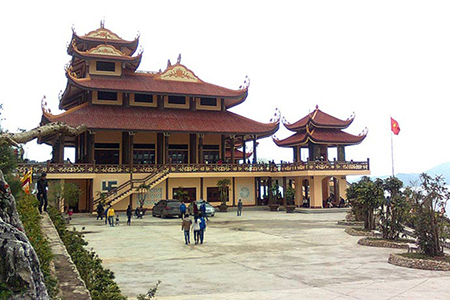Pagodas were built for the purpose of worshipping the Buddha and diffusing Buddhism.
A Vietnamese pagoda usually comprises an interior component surrounded by an exterior component, that is, the pattern of the combination of 2 Chinese characters Cong and Quoc (noi cong ngoai quoc ), which includes a worship sanctuary in the form of the letter, a long corridor surrounding the pagoda on three sides and a large courtyard. In front of the pagoda is a three- entrance gate, a structure built in accordance with the three concepts of Buddhism: nothingness, apparent existence, half-nothingness and half-existence. The centre of the pagoda comprises the Antechamber, the Intermediate Room and Upper Sanctuary.

Altars and Buddha statues are also placed in the inner corridor.
Stupas are important components of the pagoda. Formerly, stupas contained the remains or images of the Buddha. They took their source from Indian Buddhist architecture. Each stupa has a square, hexagonal or octagonal base and has an odd number of storeys, with protruding roof rims which demarcate each storey, and sometimes Buddhist vaults on the top of the roof.
In stupa-pagodas, sculptures and decorations are combined in accordance with the concept of "infiniteness" in an attempt to picture, in keeping with Buddhist doctrine, an infinite world: a limited life in an infinite world.



